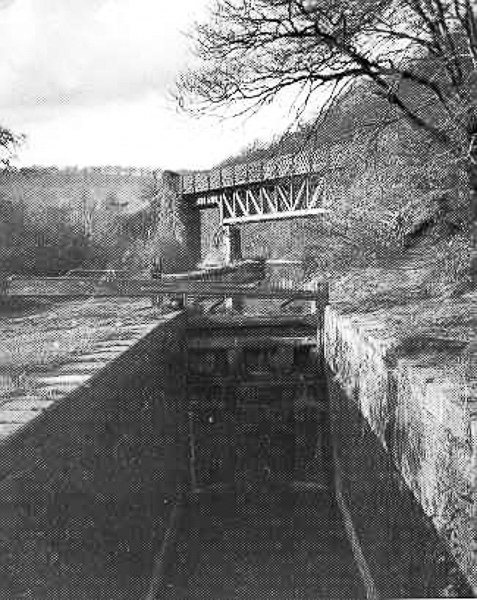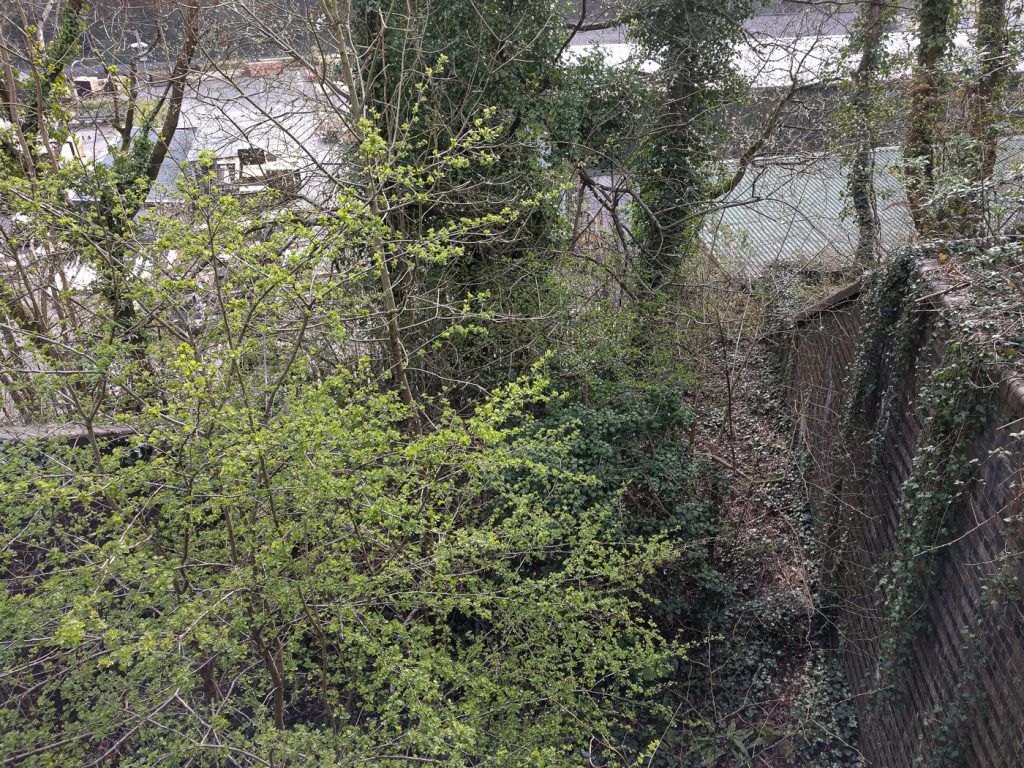The Cardiff Railway
At the turn of the last century, at the height of Cardiff’s importance in the world – the place where a £1,000,000 cheque was first exchanged – coal was king.
The third Marquis of Bute, at the time possibly the richest man in the world, didn’t seem to like having to pay the Taff Railway for the use of their lines for the transportation of his coal from his mines to his docks. A scheme was contrived to build a new line – The Cardiff Railway – into Cardiff from the Taff Railway just outside Pontypridd. By using this line to transport his coal he would reduce the time it spent on the Taff railway and consequently reduce his toll fees.
The necessary Act of Parliament was gained in 1897 and land acquired. Construction began on a grand scheme, a two track line, incorporating passenger stations and passing loops to allow the passage of many trains a day. A tunnel had to be built in the Taff Gorge as all available land was already taken up canal, river, roads and other rail lines. Bridges with enormous steel structures were built at angles across the canal, roads and an especially large bridge was built to cross the Taff at Rhydyfelin. Embankments were built to carry significant exchange sidings where the line would join the existing Taff Railway.
All this work was carried out without actually having full agreement with the Taff Vale Railway that a permanent junction with their line would be provided, and during construction legal challenges and counter claims continued to be made by all parties.
Not the the best business plan as it turned out. Perhaps the death of the 3rd Marquis in 1900 and the subsequent changes of Chairmen to the Board of the Company did not help.
A grand opening ceremony took place in 1909 and a train ran from the Taff Vale Railway over a temporary junction and down the length of the Cardiff Railway. This turned out to be the only train that ever ran the whole length of the line.
Shortly after, The Taff Vale Railway removed the temporary junction on the grounds that they needed to lay an apparently vitally important siding on the land they owned between their line and the as yet unlaid, exchange sidings of the Cardiff Railway. This effectively blocked the likelihood of any further junction between the two lines, and years of litigation continued. The vitally important siding was never actually laid.
The only coal traffic came from the colliery at Nantgarw, which was on the line, and local passenger trains continued to use the line from Cardiff to Rhydyfelin, but these were not profitable beyond Coryton. The line to Coryton from Heath remains in situ to this day in use by City Line Trains, a shadow of its hoped for greatness.
The grand bridge over the Taff was only ever used by trains proving its weight-bearing abilities after construction and the one that ran on the opening ceremony. It was eventually removed for scrap during WW2. The Nantgarw Colliery was joined to the old Taff Vale railway line at Taffs Well in 1952 and all other lines beyond Coryton were lifted.
The great plan to divert the Bute coal traffic never came to anything; after WW1 the small railway companies were all amalgamated into the GWR as part of the 1923 Railway Grouping and the need for competing lines became obsolete.
Much of the trackbed (and the canal) has now been obliterated by the A470 and industrial buildings in Treforest Industrial Estate, but a surprising large amount of bridge abutments and other civil works remain. Perhaps the greatest achievement is the Cardiff Railway HQ built in the docks. Now known as the Pier Head Building, it is one of the significant buildings in Cardiff Bay.
We also have the Marquis of Bute to thank for rebuilding Castell Coch and Cardiff Castle, both important local landmarks.
I have embarked on a long term project to record these remaining relics of a perhaps bad business decision made in time when money and resources were readily available. Why long term? I need to get round to visiting the more northerly parts of the line, and I haven’t found the time yet 🙂
The line started from a junction with the Rhymney Railway, just south of Heath High Level station and the line dropped to Heath Low Level Station – in more recent the long shallow gradient has been replaced by a shorter steeper drop to the line. Modern DMU traffic can cope with the steeper line better than the planned heavily loaded coal trains. Heath Park Drive now crosses the old track formation.
After Heath Low Level the line curves round to Ty-Glas Station – this was only built in 1987 to serve local offices and industry – and the line now runs in a straight line through Birchgrove, Rhiwbina, Whitchurch and the current terminus at Coryton. It is possible to watch the red tail light of the train from Ty-Glas, stop at all these stations, then change to white and make the return journey.




Bridge over Glamorgan Canal – now wedged between Longwood Drive and M4. Both of the roads have been built up and changed the whole landscape. You can see more in my video of this area, filmed in 2022.
➡ Changing Landscape – where the Cardiff Railway once crossed the Glamorganshire Canal

A much older view of the same bridge as it was. The lock cut is still in place on the other side of Longwood Drive and a short length railway embankment and canal cut is on the other side of the M4 heading towards Tongwynlais. Not sure where I found this picture from.

Details on the abutment of the bridge. No plain stonework for this line

Capstone on the abutment with completion date

Abutment on remaining embankment near Tongwynlais Station – by 2023 this had disappeared. The following picture is the view 180 degrees from the last.

After Tongwynlais, the trackbed has been obliterated by the A470. There was a tunnel, but this was demolished to accommodate a roundabout. As you go along the Taff Trail path alongside that roundabout, you will possibly be in line and level with that tunnel.
After that, the line was wedged behind some cottages (sort of shown by the redline)

…and then went under the Rhymney Railway line that went from Taffs Wells towards Caerphilly.

Bridge over Cardiff Railway at Taffs Well. This is now part of the Taff Trail, but used to be part of the line that went from Taffs Well towards Caerphilly. Circled in red on the map below.



The next station was at Glan-Y-Llyn, built with two long platforms on loops to allow coal trains to pass through two central lines – which never came to anything, however with the addition of a connection to the old TVR line at Taffs Well in the 1950s coal trains regularly travelled through Glan-y-llyn to a colliery at Nantgarw until the late 1980s.

➡ Here is a (wobbly) video I made cycling south through Glan-y-llyn station

This retaining wall between Glan-y-llyn and Nantgarw held back the Glamorganshire Canal’s triple locks at Nantgarw – it is now topped by the A470.
The line then continued through stations or halts at Nantgarw, Upper Boat, and Rhydefelin, before crossing the river Taff and arriving at the (non) connection with the TVR.

Map showing the non-existent junction with the Taff Railway (and the non-existent siding that stopped the junction being completed)
➡ click here to see my maps of the route overlaid on current maps.

“Wrth Ddwr a Than” – “By Water and Fire” – the one time headquarters of the Cardiff Railway in Cardiff Bay still exist as the Pierhead Building. On the side is this complex brick detailing featuring a railway engine and the Company Coat of Arms and motto. There’s nothing new about a mission statement…
As time permits, more areas of this line will covered – from Nantgarw to near the end of the line most of the trackbed has now been built over, although in places boundaries between businesses are still where the railway ran.
…to be continued…
A much more detailed history of the Cardiff railway can be found at:
➡ The Cardiff Railway by Eric R. Mountford – The Oakwood Press and E. R. Mountford 1987

